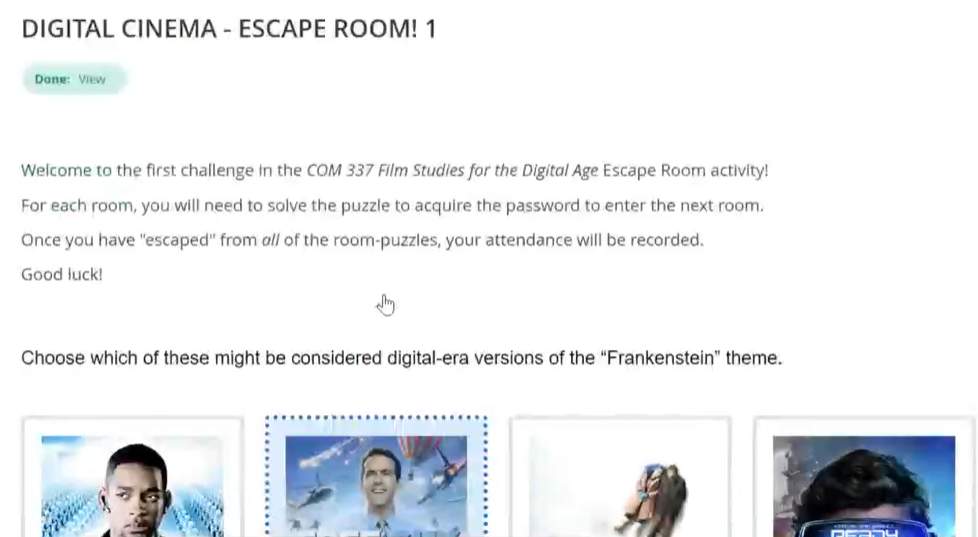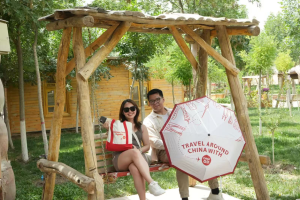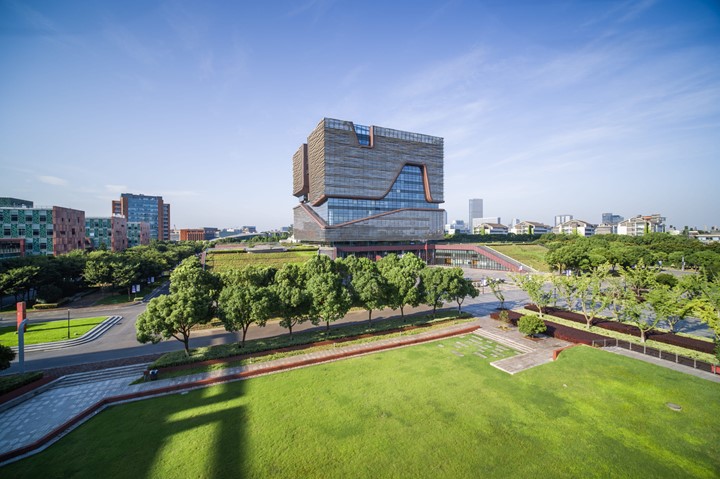Key Points
The Peer Assessment activity provides an opportunity of:
Digital Escape Rooms provide an opportunity for:
• Pre-arranged, scenario-based learning tied to learning objectives;
• A game-based learning approach, as students and teams engage in critical thinking to solve puzzles and find clues to escape into the subsequent escape room;
• Facilitation of an active learning environment;
• Notable enhancement of student motivation.

Case Details
It was a real privilege and learning experience to work on a number of the integrated technologies that I took from PGcert 404 and immediately attempted in both of the two modules that I led this term. There were some difficulties, but the digital escape room was an inspiring success. Mine was comprised of 10 interconnected individual escape rooms joined by password access affordances that are available on the Learning Mall at XJTLU. Each room was comprised of a variety of activities taken from H5P and other activities I created using multiple choice questions from the course, which itself was delivered by digital cinema, as well as a number of the activities that were available directly through the Learning Mall.
It was fun to construct the escape room. H5P, in particular, has a very visual element to it, where I allowed students to match phrases with images from films that we had seen. I had them put pictures in order which actually aligned exactly with one of the activities we completed when we were talking about digital cinema which is not necessarily linear. Furthermore, I asked students to generate the password to enter the next room by putting together the first letter of a series of selected movies.
What inspired me to initiate this project was that I was having problems motivating students. I was running a graduate seminar in Media and Communication for the first term, and then in the second term I was teaching a final-year course. There was a real disconnect between the week-to-week module content and the limited number of largely summary-based assignments that the students were expected to complete. Moreover, I was having trouble getting them to participate and pay attention to material that I felt was particularly necessary. I felt I should be trying out our TEL affordances in a course that was about technology, media, and digital cinema. I often return to the quote, “Teachers probably won’t be replaced by technology, but teachers who use technology will probably replace those who don’t”, so that really is what inspired me to do it.
They did, and it was a real success. What I did was, in the final scheduled lecture, created a series of digital escape rooms for students to complete in the last lecture and linked the attendance to the success of completion of the rooms. I left the BigBlueButton open to answer questions and guide students who had difficulties. I only had to assist two students on two occasions. Students loved the activity. In the second activity of the digital escape rooms, there was a question of: “What is the last word of the last questionnaire question for the module questionnaire.” My completion rate of the module questionnaire went from 20% to over 60%.
Perseverance. During the first term, I was significantly frustrated. First of all, by the disconnect between students’ attention in class and being completely focused only on assignments which may not have been relevant to as many as half of the classes in the module lectures. I attempted to solve that frustration using TEL. However, my integration was naive, so there was so much work just to implement it, much less think about pedagogical considerations, that they did not work. However, my advice is, do not give up. Start slowly. Give yourself the opportunity to try things you think might work. Let them fail or let them work. Find what works, find what students like and find which ones actually do improve the learning outcomes. Don’t just use TEL tools for no reason. Think carefully about how this will actually improve the learning outcomes and student experience. Don’t give up after the first attempt.
Balance. First of all, find the activities that work. You need to balanced activities that work with content. Second, dedicate appropriate and sufficient preparation time. Perhaps try one every couple of weeks. You have to balance it and choose a TEL activity and decide the week you’re going to implement it and decide how much time you’re going to dedicate to it; then maybe do what you’re more comfortable with the following week. Third, take pleasure and interest in online activity construction. I was so inspired to create my own digital escape room. When you approach it with passion and energy, you’ll take pleasure in its construction.
Technological Toolkit

H5P
LM page activity
Activity access restriction
Learn more about Dr David Christopher’s digital escape room (e.g. how they look and how they function) by watching this presentation from our Educational Development Blended Learning Community of Practice event.





Overview
Assistant Professor, Dr David Christopher, was inspired by two modules in the Educational Development Unit Module (PGCert) to incorporate H5P content types, digital cinema, escape rooms, and gamification with password access to workshops in his two courses, which significantly improved student engagement and MQ responses.
Digital escape rooms involve managing an asynchronous learning experience on an online platform. Instead of setting up physical classroom activities or homework which take time, money, paper, and possibly props, an escape room uses web-based technology (phones, tablets, or computers) to work through a scenario by solving various puzzles.
Passwords are a common way of advancing through to the next (online) room. Generally, these are just Moodle access restrictions in a word-based form that must be entered correctly at the end of each room.
The advantage of this type of activity is that all Moodle activities and embedded external resources can be used to create a puzzle.